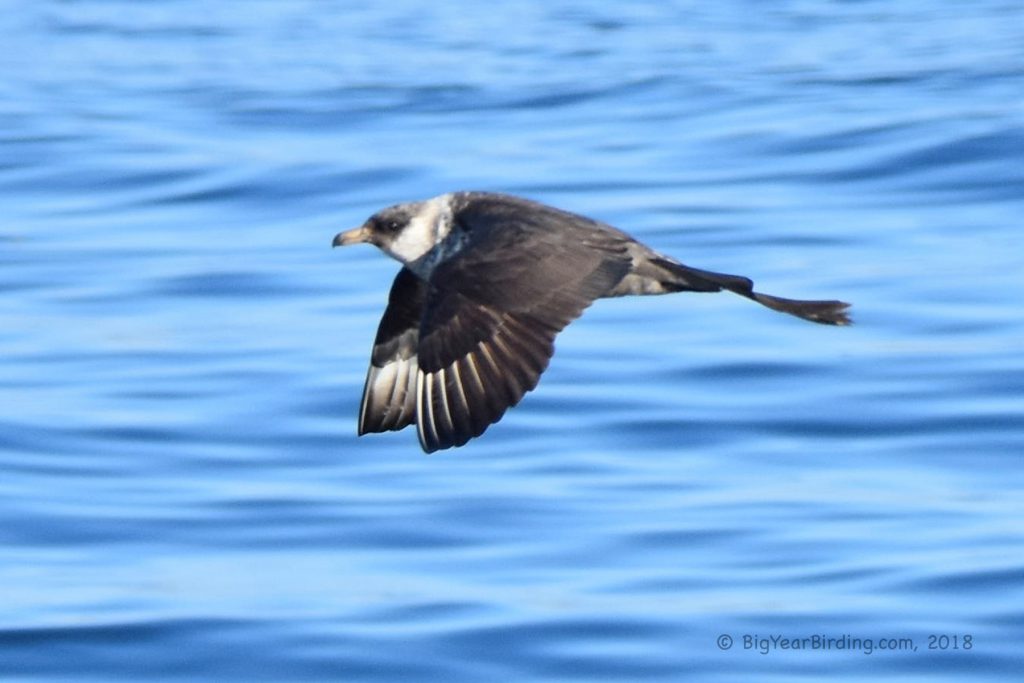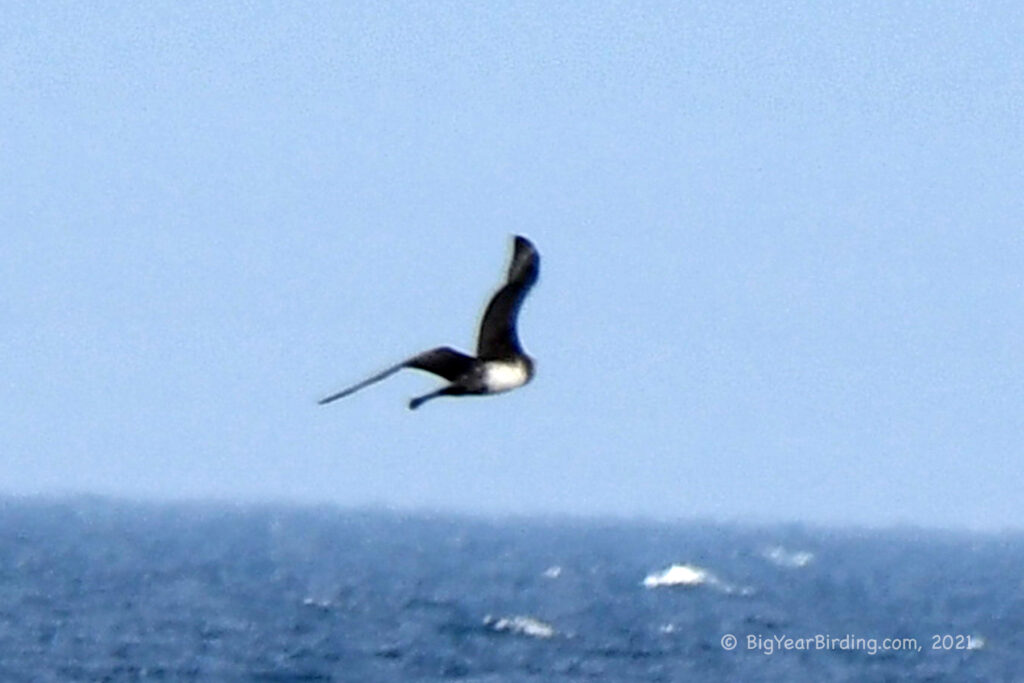
The Pomarine Jaeger (Stercorarius pomarinus) is a large seabird that belongs to the family Stercorariidae. It measures around 19-23 inches (48-58 cm) in length and has a wingspan of 47-53 inches (120-135 cm). The Pomarine Jaeger is slightly larger than the other two Jaeger species, the Long-tailed Jaeger and the Parasitic Jaeger. It weighs around 1.6-3.3 lbs (0.75-1.5 kg), with males being slightly larger than females.

The Pomarine Jaeger has distinguishing field marks that make it easily identifiable. It has a heavily-built, bulky body, a thick neck, and a short, thick bill. Its wings are long and pointed, and it has a forked tail. During the breeding season, the adult male has a striking plumage, with a black hood, a white neck, and a brown body. The female is slightly duller in color, with a brown head and neck, and a dark body. In non-breeding plumage, both male and female Pomarine Jaegers have a uniform brown coloration with a pale belly.
The Pomarine Jaeger is a circumpolar species that breeds in the high Arctic regions of Eurasia and North America. During the winter, it migrates south to the tropical and subtropical waters of the Atlantic, Pacific, and Indian Oceans. Some individuals have been recorded in the Southern Ocean and Antarctica. The Pomarine Jaeger is a strong and agile flyer, and it can fly long distances without stopping.
During migration, the Pomarine Jaeger can be seen flying over the ocean, often in small groups or alone. It is a pelagic species that spends most of its time at sea, hunting for fish, crustaceans, and other seabirds. It is also known to pirate food from other seabirds, using its size and agility to steal their catch.

In summary, the Pomarine Jaeger is a large seabird that is easily identifiable by its bulky body, short, thick bill, and forked tail. It measures around 19-23 inches (48-58 cm) in length and weighs around 1.6-3.3 lbs (0.75-1.5 kg). The Pomarine Jaeger breeds in the high Arctic regions of Eurasia and North America and migrates to the tropical and subtropical waters of the Atlantic, Pacific, and Indian Oceans during the winter. It is a pelagic species that spends most of its time at sea, hunting for fish, crustaceans, and other seabirds.

